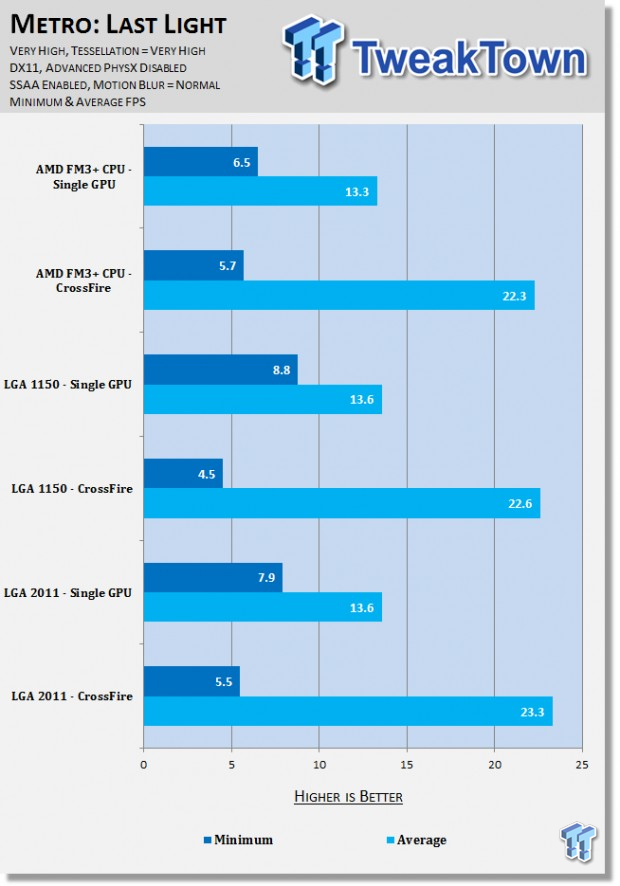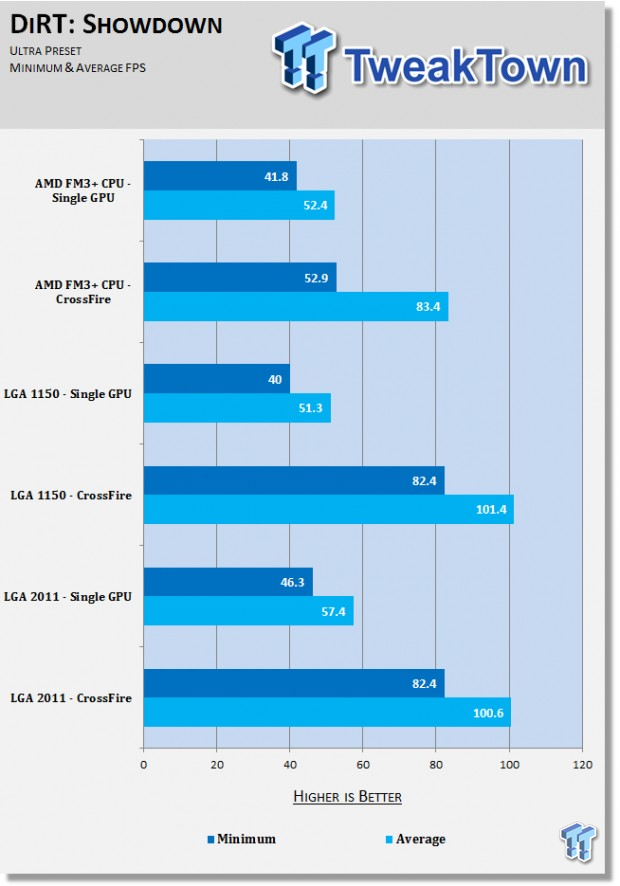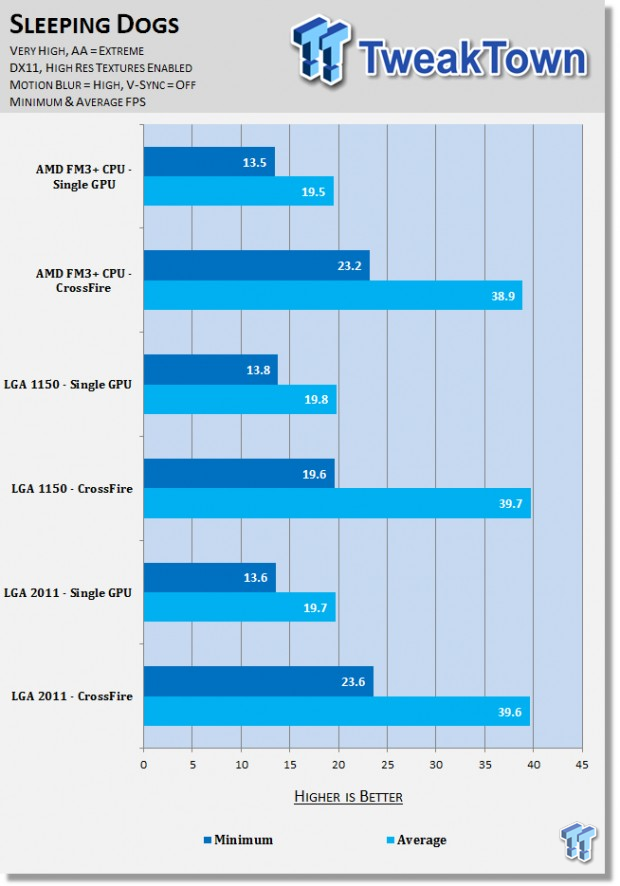It wasn't long ago that we tested our two Intel systems at 4K, comparing the LGA 2011 and LGA 1150 sockets against each other, but now we're going to do it all over again, but this time we're going to compare AMD against Intel's two sockets, at 4K.
During the first article, we found out that the CPU didn't matter too much, even when it came to gaming at 4K, but does it matter by taking things down a notch and testing it with an AMD setup? Let's take a look, shall we? First, we'll provide you with all of the specifications of our test beds, so you know what we're comparing.

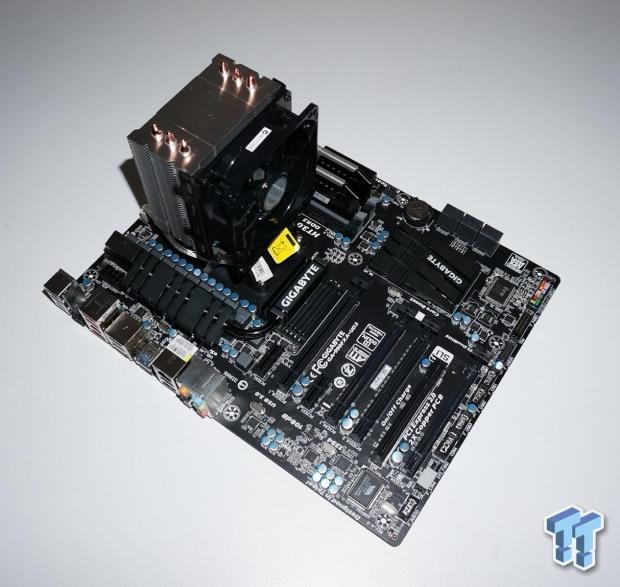
AMD specs:
- CPU: AMD FX-8350
- Motherboard: GIGABYTE 990FXA-UD3
- RAM: 16GB Corsair Vengeance Pro 2400MHz DDR3
- Storage: 240GB SanDisk Extreme II and 480GB SanDisk Extreme II
- Chassis: InWin X-Frame Limited Edition
- PSU: Corsair AX1200i digital PSU
- Software: Windows 7 Ultimate x64

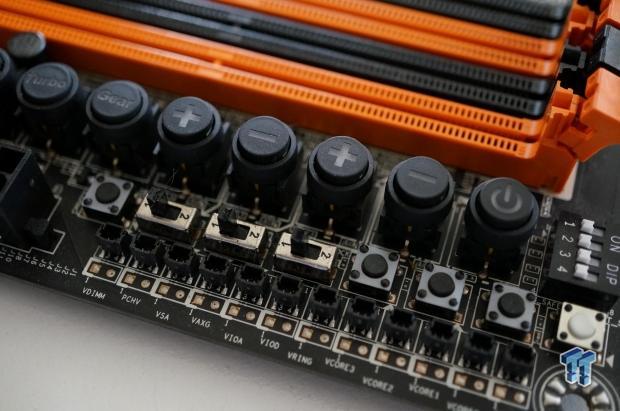


LGA 1150 specs:
- CPU: Intel Core i7 4770K "Haswell" processor w/Corsair H110i cooler
- Motherboard: GIGABYTE Z87X-OC
- GPUs: SAPPHIRE Radeon R9 290X Tri-X (2x)
- RAM: Corsair Vengeance Pro 16GB kit of 2400MHz DDR3
- Storage: 240GB Corsair Neutron GTX and 480GB Corsair Neutron GTX
- Chassis: InWin X-Frame Limited Edition
- PSU: Corsair AX1200i digital PSU
- Software: Windows 7 Ultimate x64




LGA 2011 specs:
- CPU: Intel Core i7 4930K processor w/Corsair H110i cooler @ 4.5GHz
- Motherboard: ASUS Rampage IV Black Edition
- GPUs: SAPPHIRE Radeon R9 290X Tri-X (2x)
- RAM: 32GB Corsair Vengeance Pro (2 x 16GB kits) of 2400MHz DDR3
- Storage: 240GB SanDisk Extreme II and 480GB SanDisk Extreme II
- Chassis: InWin X-Frame Limited Edition
- PSU: Corsair AX1200i digital PSU
- Software: Windows 7 Ultimate x64
But, just how much does the CPU come into play at 3840x2160? Take a look below, as the results are surprising.
Let's start our benchmarks!
Metro: Last Light
Single GPU: We have 6.5FPS minimum on our AMD setup, trailing behind the 8.8FPS on our LGA 1150 setup, which leads the group as the LGA 2011 setup was seeing just 7.9FPS.
CrossFire: When it comes to multi-GPU, things get much more interesting. We have nearly the same performance from the AMD setup as our LGA 1150 setup, with only 0.3FPS between them. When it comes to the incredibly more expensive LGA 2011 setup, we have just 1 more frame per second - nothing to write home about.
The CPU makes no difference for average frame rates, with 22.6FPS on our LGA 1150 setup versus 23.3FPS on our much more expensive LGA 2011 setup.
DiRT: Showdown
Single GPU: The AMD AM3+ CPU actually beat out the Core i7 4770K in this single GPU test with DiRT: Showdown. We have 41.8FPS minimum on the AMD system, and just 40FPS on the LGA 1150 rig. The LGA 2011 socket comes out ahead with 46.3FPS.
The average FPS doesn't change much either, with 52.4FPS on the AMD rig compared to 51.3FPS on the LGA 1150 rig and 57.4FPS on the LGA 2011 setup.
CrossFire: Things get very interesting with the CrossFire tests on DiRT: Showdown, with 52.9FPS minimum on the AMD chip, but a huge 82.4FPS on the LGA 1150 setup. The LGA 2011 setup provided the same minimum FPS results as the LGA 1150 setup.
When it comes to average frame rates, the AMD setup was pushing 83.4FPS with the two R9 290Xs in CF, while the LGA 1150 sped out in front with 101.4FPS, but the LGA 2011 proved slightly less capable with 100.6FPS.
Tomb Raider
Single GPU: We are pretty flat across the board here when it comes to the minimum FPS, with the AMD system pushing out 22FPS - pretty close to the Intel systems which see 23.8FPS and 23.3FPS for the LGA 1150 and LGA 2011 systems, respectively. Average FPS numbers were similar, with 28.2FPS, 29.3FPS and 28.9FPS for the AMD, LGA 1150 and LGA 2011 systems, respectively.
CrossFire: Things don't change much when it comes to CrossFire, with the AMD system seeing 41.5FPS, edging out the LGA 1150 system with its 40.3FPS minimum. The LGA 2011 system is still ahead here with 45.3FPS.
Average FPS scores are flat again, with 54.7FPS from the AMD rig, 56.5FPS from the LGA 1150 setup, and 55.6FPS from the LGA 2011 setup.
BioShock Infinite
Single GPU: We're beginning to see a pattern emerge here, with the AMD system not trailing too far behind the Intel systems - with 11.4FPS minimum on BioShock: Infinite. This is compared to the 14.8FPS from the LGA 1150 rig, and 14.3FPS on the LGA 2011 system.
When it comes to average FPS, we're seeing very average results. This isn't bad, it's actually quite good. The AMD system spat out 29.8FPS, while the LGA 1150 system was pushing 30.6FPS, and its bigger brother pushed out 30.1FPS.
CrossFire: The AMD rig actually beat out the LGA 1150 system here, with 13.4FPS versus 12.5FPS for minimum FPS results, while the LGA 2011 system beat them both with 16.8FPS. When it comes to average FPS, we see a close gap with AMD scoring 54.5FPS, and the two Intel systems pushing 59.2FPS and 58.7FPS for the LGA 1150 and LGA 2011 systems, respectively.
Sleeping Dogs
Single GPU: The pattern continues here, with AMD doing a very good job at keeping Intel at bay at 4K. Starting with the minimum results, we have 13.5FPS for AMD, 13.8FPS for the LGA 1150 rig, and 13.6FPS for the LGA 2011 rig. Average FPS results were pretty much identical between the three systems, with AMD providing 19.5FPS, the LGA 1150 system giving us 19.8FPS and the LGA 2011 system managing 19.7FPS.
CrossFire: CrossFire didn't do much to differentiate the CPU setups, with the AMD setup seeing 23.2FPS minimum, while the LGA 1150 managed 19.6FPS - a win to AMD by a decent margin there, but the LGA 2011 came for blood, not wanting to lose to AMD with 23.6FPS.
Average FPS scores were nearly identical once again, with the AMD rig seeing 38.9FPS, the LGA 1150 system pushing 39.7FPS and the LGA 2011 system seeing 39.6FPS.
Final Thoughts:
The more we test our CPUs and Radeon R9 290Xs in CrossFire, the more we see how irrelevant the CPU is - mostly. There are some advantages, but is it worth the hundreds of dollars more? You can get the AMD FX-8350 processor on Amazon for $199.99, while the GIGABYTE GA-990FXA-UD3 motherboard is just $128. This is a total of $327.99 for the AMD combo.
When comparing this against the Intel Core i7 4770K CPU which is $319.99 on its own, without the GIGABYTE Z87X-OC which is another $168.99 for a total of $488.98 - that's an extra $160.99 over the AMD setup, but it's not providing that much more performance.
Then we have the LGA 2011 setup, where the Core i7 4930K is a huge $579.99, while the ASUS Rampage IV Black Edition costs an extra $481.99 for a total of $1061.98. This $733.99 more than our AMD combo, which is a huge amount of money.
If you were to go down this route, the SAPPHIRE R9 290X Tri-X GPU cost $569.95 each - but if you were to go down the AMD route, the savings against the LGA 2011 can buy you one of the R9 290X Tri-X GPUs, with $164 change. That change can get you a decent SSD, like the SanDisk Extreme II 240GB SSD which is... $159.99 - still, giving you $4 change.
All in all, the performance increase that the LGA 2011 system provides doesn't entice me to recommend the most expensive option, but the cheapest option - AMD. For the huge savings, you can grab yourself a massively fast GPU, and an equally as fast SSD, which will make your entire system feel faster - instead of having all that CPU power, with nowhere to go.
This is the problem with games being coded for consoles and spat out to multi-platforms, instead of concentrating on utilizing all of the grunt us PC gamers have. Right now, Intel is having a big problem justifying its CPUs being so expensive, even at 4K. Our tests will continue, with our next lot of tests involving some multi-monitor benchmarks between the various CPUs and GPU setups we have on offer.
Last updated: Nov 3, 2020 at 08:12 pm CST


